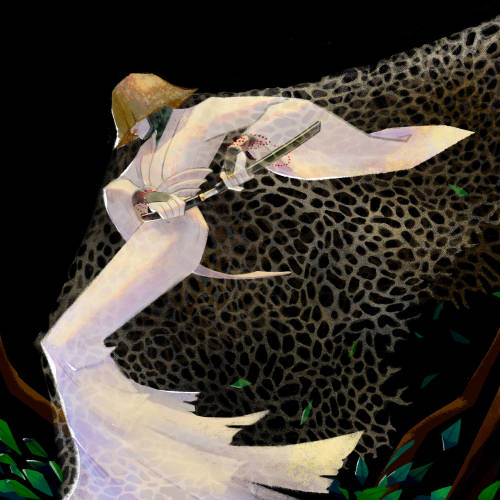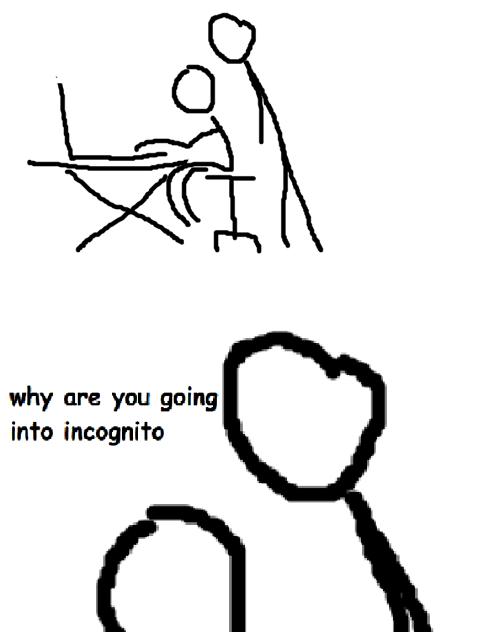౨ৎ⠀⠀ׄ⠀⠀. ⠀ ꙆɩttꙆᥱ 𝗯𝘂𝗻𝗻𝗶𝗲 ⠀ׅ⠀🥛 ⠀ׄ⠀ ꒱ ꒱

౨ৎ⠀⠀ׄ⠀⠀. ⠀ ꙆɩttꙆᥱ 𝗯𝘂𝗻𝗻𝗶𝗲 ⠀ׅ⠀🥛 ⠀ׄ⠀ ꒱ ꒱
૮꒰ ྀི ⁄ ⁄ ⁄ ྀི ꒱ა 태쿡 . . ᥴ-ᥴᨵᥙρꙆᥱ ! 💭
𝗽𝗲𝗾𝘂𝗲𝗻̃𝗼 o꯭s꯭ito᤻ 남자 ♡ . . ໒꒰ ´ ` ⑅ ꒱ఎ
┃ 𝟷𝟿𝟿𝟻 & 𝟷𝟿𝟿𝟽 ; C͜U͜P͜ID'S 𝗗𝗜𝗔𝗥𝗬 ♡

More Posts from Linmhd and Others
I just barely graduated architecture school. Straight C student. My mediocre buildings are everywhere
Daydreaming: Maladaptive VS Immersive
Note: I am not a health/psychology professional by any means; this is simply a list I've put together from my own understanding and experiences on the topic, based upon various readings/research I found online. I hope it may be helpful/informative to read regardless, feel free to add on or correct this!

Maladaptive Daydreaming:
Excessive daydreaming; becoming absorbed in and fixated on daydream events, scenes, characters, or worlds.
Used as a form of escapism, often to avoid dealing with real-life situations (traumatic, unpleasant, or otherwise).
More interested and/or focused on the daydream/inner world than the real world, or on daydream relationships rather than real-life ones.
Difficulty or inability to stop daydreaming, even when real-life tasks need to be done.
An excessive/large amount of time is spent daydreaming, instead of being fully present in real-life events.
A desire to be like the idealized, daydream version of themself or their characters (/feeling inadequate with self in reality).
May feel a loss of control over daydreams, or when/where daydreaming occurs.
Some describe maladaptive daydreaming as an "addiction to daydreaming".
Many feel embarrassed or ashamed of (the extent of) their daydreaming.
Some individuals experience maladaptive daydreaming as a form of dissociation.
Often occurs in individuals with ADHD, depression, anxiety disorders, PTSD, and those who have experienced significant stress, abuse, and/or trauma.
Though the daydreams themselves may be enjoyable/pleasant/comforting, the lack of control and difficulty focusing on reality causes distress to the daydreamer.
If this daydreaming causes significant impairment in daily life and regular distress to the individual, they may have Maladaptive Daydreaming Disorder (MaDD).

Immersive Daydreaming:
Simillar to maladaptive daydreaming, but instead, is a more positive way of coping.
The individual is present in real-life relationships, and in their own plans for the future.
Able to stop daydreaming when real-life tasks need to be attended to. Has a solid sense of control over their daydreaming.
Uses daydreaming as a healthy coping mechanism for dealing with stress/trauma/illness/conflict etc, rather than using it to avoid these situations.

BOTH Maladaptive and Immersive Daydreamers (May) Experience:
Very vivid, often extensively detailed daydreams. (Can be visual, auditory, or a mixture of sensory events.)
Feeling the emotions or sensations that are happening in the daydream through the body, as if they were really happening.
Strong attachments or connections to daydream characters (often called "paras").
Presence of an inner world(s)/universe(s), where daydream events take place ("paracosm", "dreamverse").
A sense of "autonomy" regarding character interaction, and/or being "influenced" by their characters.
Repetitive physical activity while daydreaming (pacing, tapping, rocking, etc.)
Speaking daydream dialogue aloud, and/or physically emoting facial expressions while daydreaming.
Real life events triggering daydreams (music, and other media are common daydream triggers.)
"You're so creative!", "You've got an overactive imagination."

* Someone can experience both Maladaptive and Immersive Daydreaming within their lifetime/during different times in their lives!
Immersive daydreaming may become maladaptive if it starts getting out of hand (perhaps after a stressful/traumatic event, or the onset of another disorder). Maladaptive daydreaming can be turned into immersive daydreaming (to cope, or to de-stress), with the help of therapy.
(Thank you for reading! 💌)
i have been losing control of my temper, i cry about things that doesn’t even make any sense and then i blame myself for it
💗💗
Relationships are about helping each other grow and that involves emotional labor on both parts both big and small things. If you know your partner has some sort of anxiety issue or w/e sending “hey i’ll be busy today i’ll text you when i can love you” will literally absolve so many issues in less than 30 seconds. But you freaks up here seem to think that caring about someone and catering to them (to a certain degree) is weird and unhealthy. And you wonder why you have no good relationships romantic or platonic.
Symbols
ꐑ • ᴥ ◠¨ 𓄹﹅𖣠 𐀔 ⍝ や 𖥻 ᨎぅ〃 ∿ 𓂅 𑁤 𓈊 ɔ ꮺ ◒ 𖤩 ꮻ ᨓ᯽ 𔘓 𓈀 𓈃 ⋆ 𓈈 𖣯 ☆ ⲓ ボ 国 ⌁ ◡ ᥐ ࡇ 𓆩 𓍢 ꞌ Ꞌ݈𔗂 ▹ ◜ 𓄼 ゃ 𓄳 ⟠ ▭ ▬ ⩎ ᜊ ꗃ ⬫᎔⸃ ᱺ ៵ 𖦹 𖥨ゅ᠀ 𓏲 ७ 𓏔 🜲 ⫘ 𓏳 𖨳 𖨂 𓍲 ⩇ 𓆪 𓍼 Ⳋ 𓏭 ٪ 🜸 › 𓄲 𖫓 𑁯 ﹏ ✿ ᖚ ⸯ̳ ഒ ૪ 𐩗 𓏰݉ ๑ 𖤘 ‹ ⌑ 𝆳 𐌎 ⚐ ✫ ᕱ ▦ 𑁍𐑺 ⌗ 𐪔 𓄷 𖤐 ꒧ ᘒ 〰 𒀭 ⩄﹫⛉ ͽ ⦁ ☻ ᨵ ⤙ᐢ Ⱉ 🜰 ⁹ ₁ 𖠅 ١ 𖡼 ︎ִֶָ ̽𖧧 ָ࣪ 𖧵ֹֺֽ໋໋݊ 𓄹𓈒 𓏲 ๋࣭ ꕤ ۰৫ :¨·.·¨: ᵔᴗᵔ ៸៸ ˘ᵕ˘ ପ ‹ ૮₍ • ᴥ • ₎ა ꕤ # ๑・ ꈊ ⍝ ˒ ・ ⍈ ∞ ꞈ⠀𓈒 ♡̶ 𓂃 𝆯 𓍯 𓏲 𔓘 ᭡ 𓂅 ꊥꊥ ᯽ ◷ ﹆ · જ ◐ ﹅ ᵕ̈ ♡̷̷ ५ତ っ ଗ ᨳ ꧔ ଓ 𖥻 ୨୧ ɞ ˚ ≀ ۰ ⋆ ☼𝆬 ꒰ ꐦ ᘏ⑅ᘏ ໒ ꒱ ⊹ ៸៸ ، ◞ 𓍢 𓏲 › 𖧧˚ ⸼ ۫ 𓍯 ᭡ ࣪ ɞ˚˙ ⍈ 𓂃 𓈒 𓏸 ՙִՙ ⬞ ✿ִ𝆬 ❁ 𐑮𐑮 ꜆ׄ꜆: ⤓. っ٫٫𝆯 ꜥꥈ ❁〬 ⁕𓈒࣪ 𐑺﹢◍࣪ 𓈒ꜝꜝ ﹠ ⭒ ﹫ ›‹ ◐ ִֶָ 𖥻 ٫ •᎑• ໋↵ ੭ . ᕱׄ ᱖ ⑅ ⱺ ५ ꕤ ⌕ ᶻᶻᶻ 𖦆 甲 ꮺ ꗃ ᨒ ⿻ 𖣯 ◗ 𔓶 𔘓 𖣠 𓏸 ᜊ ⑅ 𖤥 ᯅ ▭ ⩍ 𖥔 ◍ ᨓ 𖧵 ❏ ζ ꐑ 𓈀 જ ⌗ ᕱ ៹ 𖧧 ▬ 𓈈 ﹫ 𝆳 ∿ 𓏲 𓄼 𐅰 ๑ꕤ ⌕ 𖦹 ҂ 𖠿 🜰 ᘏ ★ 𐌎 𓂃 𖣗 ﹅ 🜸 ㇴ 𖤐 𓍢 𐪔 ⫘ ≀ 𔒌 ⩨ 𐑣 ︶ ♡ ᨳ オ 𓏴 ⌓ ꒧ ⎙ 𓂅 ⦂ ୨ ꩜ 𓄹 𝆬 ᠉ 𓍯 ៚ ▦ 𖤠 ◠ ◡ ᤳ 𓊌 𔓕 ᭝ ៳ ♢ ⊹ 𖥦 𐚱 ᜃ 𖤩 𒀭 ୫ 𖨂 ⍝ ५ ꒰ 𓄴 𐄹 𓊔 ■ ィ ◒ ໑ ⚲ ⌑ ⌗ 𖥸 𖥻 ⩇ ୭ ꊥ 〻 ✷ ✦ ⍈ ミ 𖤘 (:̲̅:̲̅:̲̅[̲̅::]̲̅:̲̅:̲̅:̲̅) ૮ ⁄ ▞ ᥫ᭡ ᴗ ꈍ ꜝ ꜞ ☼ ꕀ ✿ ヤ ࿂ ⌇ ▹ ▢ ▱ ▰ ♪ ♯ ⛀ ⛶ ✰ ⟄ ⟳⦁ 〃 ୪ ្ ៵ っ⤣ ⤥。 ︶ ᜊ ࡇ ﹀ ฅ ꮻ ఇ യ ☽ ☻ ꪔ̤̮ ░ ♢◞ ﻌ ◟´ ˘ ੭ .• 𓈒 * മ ˕ ♫︎ 𓁹 ✩ ᯾ ᴥ︎︎︎ 𖠌 ꕥ ໒ ❁ ◔ ﹢ 𖧧 ৶ ⭒ ତ ♡ ৎ୭ ଘ ɞ ✦ 𖤐 ★ ✧ ♥︎ ତ っ ଗ ᨳ ꧔ ଓ 𖥻 ୨୧ ɞ ˚ ≀ ۰ ⋆ ☼𝆬 ꒰ ꐦ ᘏ⑅ᘏ ໒ ꒱ ⊹ ៸៸ ، ◞ 𓍢 𓏲 › 𖧧˚ ⸼ ۫ 𓍯 ᭡ ࣪ ɞ˚˙ ⍈ 𓂃 𓈒 𓏸 ՙִՙ ⬞ ✿ִ𝆬 ❁ 𐑮𐑮 ꜆ׄ꜆: ⤓. っ٫٫𝆯 ꜥꥈ ❁〬 ⁕𓈒࣪ 𐑺﹢◍࣪ 𓈒ꜝꜝ ﹠ ⭒ ﹫ ›‹ ◐ ִֶָ 𖥻 ٫ •᎑• ໋↵ ੭ . ᕱׄ ᱖ ⑅ ⱺׄ ५ ꕤ ⌕ (꒪˙꒳˙꒪ ) ꐑֶָ֢ 𓂅 ⊹ ⭒ ᕬ⑅ᕬ
ฅ ࣪ ˖ 𓂃 ˒ ⬩ 𓈃 ִֶָ𖤐˚. ࣪ ˃̵ᴗ˂̵ ✦ ࣪ ˖ 𓄹 ★☆ 𓂃𓏲࣪ .˖࣪ 𖥨¸ ،̲،̲ ▸ ִֶָ 𖥔 ࣪˖ ⋆ 𖦆 ִ ۫ ּ➛ ̨𖥔 ִ ་ ، ˖ ࣪ ་ ˖ ʿꜝꜞ ᳝ ࣪ ،، ָ࣪ ᥦ 𖠗 ˒ ˒ ๑ㅅ ᖚ ७ ⸝ ⟆ ⚘ ₰ ࿂ ﹅ ಌ ◠ ⭒⠀ʚ⠀𓍢 ≀⠀⁺⠀˒⠀७⠀٫ ᨒ⠀⸼⠀જ◞ ♡ ■ ꫂ ২ ζ १ 𖥧 𓂃 ୫ ૪ ໒ 𐂴 ৎ ຊ ∿ ꔵ ⸙ ຯ ໒ ೨ 𖧧 Ꮺ 𖧷 𓏲 𖥨 ๑ ໑ ࿔ ७ ५ ୭ ᠀ 𑁯 ੭ ⩩ ৎ 𖨂 𖥦 𓍢 ζ ꔛ ੭ 𓎆◞ 𐚱 ⩄ ❀̸ ੭ ꖹ·˚ˎˊ˗ ꊞ ✁ 𖠵 ꗃꠂꠥ ❍ ∅ 𝄄︕ 𐦙𐦕 𐦋 𐩗𐪞𐪚 ় ४ ֎ 𔓐 – 𖡩 𓐆 𖨳 ✫ ✯ ✭ ⛌ ⛉ ⚝ ⚐ ⚃ ♺ ⌇ ⌖ 𓄧 𓋲 𖠌 𖤘 𖤺 🀰 ○ ● . . . . Ⱉ ॱଳ͘ ıllıllı മ ⩎ ✶ ᘒ ͽ ⚲ 𓆩 𓈊 ،، ˶ ▹ 𐐫 ፀ ✦ 𑁤 ᐛ ✶ ᨷ ⚇ ͽ ᐢᐢ ⺲ 𐄬ଘ 𖡩 𖠗 𔖏 ✠ ⩨ 𖥠 ❈ ✧ ౾ ᨎ ໒ ଡ଼ 𓆩 𐑺 𝟑 𖥨 ≛ ⬔
๋࣭ ⭑ ⸱៰ ͘ ࣭⸰ 𖥔 ͙ࣳ 𓂃 ࣪៙͘⸳⭑ࣶࣸ ֺ✦⸼࣪⸳ 𓂃 ⴰ ࣭͘ ⭑ุ 𝁼 ✷ 𝅄 ✦ ⸱࣭ 𓄹 ⭑ ֩ ⸳ 𝁼 ★ ͘ ⴰ ⸰ֺ⭑« ✇ ุ๋ ⸱ 𓄰 ⩩ ៰࣪ ࣭ ﹟⤿ ⸼ ᨓ ◞ ̑̑ ꪶ ꫂ Ꮺ࣭۪ ⵓ𓏲࣪◜ ִֶָ𓏲࣪ ⨾ ˖ ୧ 。𓈒 𓈒 𓈒 ༣ ྅ ﻬ˚ ͙ 𑂻𑂴 ♡ 𓍢 ₍ 𓆤 𓏲࣪ . 𓂃 ꈍᴗꈍ 𖨂 ❛ ¸ 𓂅 ៹ 𓂃 ๛∙᷅° 𖦥 ᵎ ⚟ ⚞ ৲ ﷼ ㍐ ૱ ⚑ ⚐ 。 ⩨͢ ࿓᪶ ະ﹢ ˖ ⁶ ₆ 𓃠 ⊹ ˚. !! 𖤐ʾ ִֶָ 𖥔 ݁ ˖ଘ ˘͈ᵕ˘͈ ꧔ ꉂ🕷ʾ ִֶָ𖧧.៹ 𓂃 𓍯 𖤐˚.) 𓍼 ᝢ ⊹ ˚. ♡﹙﹚㶌 旗 .𑁍ࠬ¸𓍢 𓄂𓄽 ✩ ೃ °
like if u save. <3









Let’s talk about the fabulous aromantics out there
DO ATOMS DECAY OVER TIME??
Blog# 196
Saturday, May 28th, 2022
Welcome back,
Although life on Earth may seem rather stable and unchanging—the tide goes in and out, the Sun rises and sets, and the months bleed on the same as always—in the grand scheme of things, our universe is actually a rather dynamic place.
Everyday, millions of stars are born and die, and in the end, the same thing will happen to our own Sun.
A few billion years from now, as our star begins to transition into a red giant, temperatures on our world will increase, and life will be extinguished. Just a few billion years after that, once the Sun exhausts its supply of material to sustain nuclear fusion, it will begin its death throes. When this happens, it will cast off its outer layers and, eventually, fade into darkness.
Nothing in our universe is eternal…or is it?

Atoms are the building blocks of matter. They, quite literally, make our universe what it is. When we die, our bodies do not turn into nothing; rather, they are broken down into their constituent parts and recycled into the ecosystem. In short, our atoms go on long after we are gone.
But just how long can atoms last? Will they eventually be broken down into…nothing?
To answer this question, you need to understand a little bit about how atoms work. As you may know, atoms contain protons and neutrons, and they are surrounded by a “shell” of electrons. The number of electrons that are found in the cloud are equal to the number of protons. This helps create stability.

Ultimately, the number of protons is what determines the atomic number. For example, helium has two protons, so its atomic number is two (and it appears second on the periodic table of elements). The number of neutrons that are found in an atom are generally consistent, but not always. And if an atom doesn’t have the “correct” number of neutrons, sometimes, the atom may lose a neutron (kind of like how you lose a sock in the wash). When this happen, the atom becomes unstable and, in an attempt to become a stable atom, it shoots off subatomic particles. Most often, the atom will shoot off an electron.]
This is how atoms breakdown.
Anytime that you have a heavy atom, there is some risk that it will spontaneously start to break down into smaller particles. This is known as “radioactive decay.” This is just a very basic breakdown. Please see the link for more on radioactive decay.

To return to the point at hand, unfortunately, this is a stochastic process (which means that it has “a random probability distribution, or pattern that may be analyzed statistically, but may not be predicted precisely”). In other words, we can’t pinpoint exactly when a breakdown will occur - when a subatomic particle will be shot off; however, since we can analyze the pattern, we can determine how many atoms will decay over an average time, which is called the “half-life,” and it is a very reliable estimate.
Since an atom has a finite number of protons and neutrons, it will generally emit particles until it gets to a point where its half-life is so long, it is effectively stable. For example, Bismuth-209 is believed to have the longest decay rate. It undergoes something known as “alpha decay,” and it’s half-life is over a billion times longer than the current estimated age of the universe.
Originally published on futurism.com
COMING UP!!
(Wednesday, June 1st, 2022)
“IS THERE ANYTHING BEYOND THE UNIVERSE??”





Mushroom Fighter - Character Design Challenge by selected artists: Dương Việt Dũng, Keane Mar, Dio Mahesa, Sean Kyle Manaloto, Victor Vagnier



real event that occured that i cant stop thinking about
-
 ggukiemyworld liked this · 1 week ago
ggukiemyworld liked this · 1 week ago -
 sasavjp liked this · 2 weeks ago
sasavjp liked this · 2 weeks ago -
 bxnnyggxky liked this · 2 weeks ago
bxnnyggxky liked this · 2 weeks ago -
 angelito-caido liked this · 3 weeks ago
angelito-caido liked this · 3 weeks ago -
 gaktz liked this · 3 weeks ago
gaktz liked this · 3 weeks ago -
 mysticalnerdchild liked this · 1 month ago
mysticalnerdchild liked this · 1 month ago -
 anaclara987 liked this · 3 months ago
anaclara987 liked this · 3 months ago -
 arabella-70-s liked this · 3 months ago
arabella-70-s liked this · 3 months ago -
 blogintwi liked this · 3 months ago
blogintwi liked this · 3 months ago -
 cwpidsmaiden liked this · 3 months ago
cwpidsmaiden liked this · 3 months ago -
 hachifresitas liked this · 4 months ago
hachifresitas liked this · 4 months ago -
 faery-lulu liked this · 4 months ago
faery-lulu liked this · 4 months ago -
 metalquiw liked this · 4 months ago
metalquiw liked this · 4 months ago -
 i97jkooo liked this · 4 months ago
i97jkooo liked this · 4 months ago -
 bambitez liked this · 4 months ago
bambitez liked this · 4 months ago -
 sleepymymelo liked this · 4 months ago
sleepymymelo liked this · 4 months ago -
 caelestdior liked this · 4 months ago
caelestdior liked this · 4 months ago -
 pluvyens liked this · 4 months ago
pluvyens liked this · 4 months ago -
 rendezvvous18-6y liked this · 5 months ago
rendezvvous18-6y liked this · 5 months ago -
 cortezinho liked this · 5 months ago
cortezinho liked this · 5 months ago -
 kira460 liked this · 5 months ago
kira460 liked this · 5 months ago -
 wingeddeerdeer liked this · 6 months ago
wingeddeerdeer liked this · 6 months ago -
 milknini liked this · 6 months ago
milknini liked this · 6 months ago -
 baezips liked this · 6 months ago
baezips liked this · 6 months ago -
 miuqitas reblogged this · 6 months ago
miuqitas reblogged this · 6 months ago -
 diswased liked this · 6 months ago
diswased liked this · 6 months ago -
 sunodolli liked this · 6 months ago
sunodolli liked this · 6 months ago -
 nunadollie reblogged this · 7 months ago
nunadollie reblogged this · 7 months ago -
 llottuoss liked this · 7 months ago
llottuoss liked this · 7 months ago -
 lotousu liked this · 7 months ago
lotousu liked this · 7 months ago -
 usele8issf liked this · 7 months ago
usele8issf liked this · 7 months ago -
 s-atellitez liked this · 7 months ago
s-atellitez liked this · 7 months ago -
 iponyoo liked this · 7 months ago
iponyoo liked this · 7 months ago -
 sadiastic liked this · 7 months ago
sadiastic liked this · 7 months ago -
 adulteriusk4 liked this · 8 months ago
adulteriusk4 liked this · 8 months ago -
 beezuusz liked this · 8 months ago
beezuusz liked this · 8 months ago -
 pandita445 liked this · 8 months ago
pandita445 liked this · 8 months ago -
 keooooooooo liked this · 8 months ago
keooooooooo liked this · 8 months ago -
 paolagod liked this · 8 months ago
paolagod liked this · 8 months ago -
 e-mookkty liked this · 8 months ago
e-mookkty liked this · 8 months ago -
 husseey liked this · 8 months ago
husseey liked this · 8 months ago -
 tokkiedoll liked this · 8 months ago
tokkiedoll liked this · 8 months ago -
 ispitconfetti liked this · 8 months ago
ispitconfetti liked this · 8 months ago -
 coeinhs liked this · 9 months ago
coeinhs liked this · 9 months ago -
 wynstarz liked this · 9 months ago
wynstarz liked this · 9 months ago -
 nasxyzwa liked this · 9 months ago
nasxyzwa liked this · 9 months ago -
 gojosweety liked this · 9 months ago
gojosweety liked this · 9 months ago -
 dorisama reblogged this · 9 months ago
dorisama reblogged this · 9 months ago -
 dorisama liked this · 9 months ago
dorisama liked this · 9 months ago
